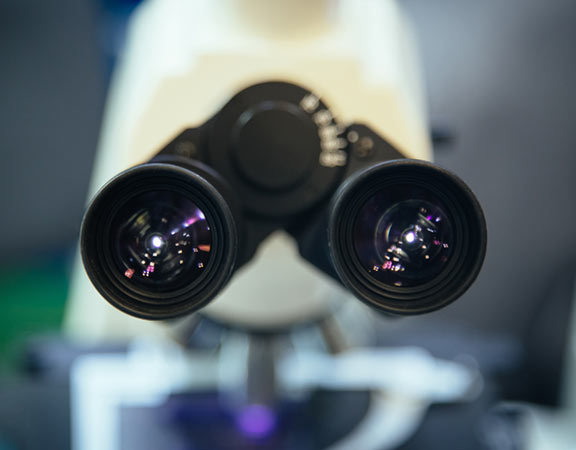Retina Services
Diabetic Retinopathy
What is Diabetic Retinopathy?
High blood sugar levels in people with diabetes can cause damage to the blood vessels and retina within the eye. This is called diabetic retinopathy.Damage and weakening of the blood vessels can result in swelling and leakage in the retina. Sometimes the blood vessels can close and limit blood flow to the retina. Abnormal new blood vessels can also grow and bleed or form scar tissue. These changes from diabetes can result in vision loss.

Normal Vision

Diabetic Retinopathy

Diabetic Eye Disease
Stages of Diabetic Eye Disease
Early Stage: Non-Proliferative Diabetic Retinopathy NPDR. There are two main distinctions of diabetic eye disease. The first, Non-Proliferative Diabetic Retinopathy, or NPDR: This is the stage of diabetic eye disease where there are changes evident in the retina.
There are two main distinctions of diabetic eye disease. The first, Non-Proliferative Diabetic Retinopathy, or NPDR: This is the stage of diabetic eye disease where there are changes evident in the retina.
Many people with diabetes have it and it may or may not be associated with vision changes. At any stage of disease, vision loss can occur when the central retina swells.
Swelling of the central retina is called macular edema. It is the most common reason for blurry vision and vision loss with diabetes.
These images show macular edema, evidenced by an OCT scan (Optical Coherence Tomography). Macular edema is the most common cause of vision loss in diabetes, also referred to as Diabetic Macular Edema or DME.
In advanced/severe NPDR, blood vessels in the retina can close off and restrict blood flow to the retina. This is called macular ischemia, and it can result in blurry vision. If you have NPDR, your vision may be blurry, depending on the severity of the eye disease.
What are the Stages of Diabetic Eye Disease?
Advanced Stage: Proliferative Diabetic Retinopathy PDR. Proliferative Diabetic Retinopathy, or PDR: PDR is the most advanced and severe stage of diabetic eye disease. As a result of poor blood flow to the retina, new blood vessels start to grow. This is called neovascularization.
Proliferative Diabetic Retinopathy, or PDR: PDR is the most advanced and severe stage of diabetic eye disease. As a result of poor blood flow to the retina, new blood vessels start to grow. This is called neovascularization.
The fragile new vessels grow in the wrong places and often bleed into the eye and can cause floaters or completely block the vision. The new blood vessels can also form scar tissue as they grow. This scar tissue can cause severe problems from traction or pulling on the retina and result in a retinal detachment.
PDR is very serious and can result in permanent irreversible vision loss.
What are the Symptoms of Diabetic Retinopathy?
Diabetic retinopathy may not cause any symptoms at all.Therefore, it is important to have regular eye exams. As the severity diabetic retinopathy progresses, symptoms may include:
- New or increasing floaters
- Blurry vision
- Fluctuating vision – sometimes blurry, sometimes clear
- Dark or blank areas in your field of vision
- Decreased night vision
- Decreased clarity of colors or images
Diabetic retinopathy usually affects both eyes, but sometimes one eye may be worse than the other. Fluctuating blood sugar levels could also affect your vision.
How is Diabetic Retinopathy diagnosed?
Drops will be put in your eye to dilate (widen) your pupil.Your ophthalmologist will use special lenses and bright lights will be used to look into your eyes. Special blood flow pictures, called Fluorescein Angiography (FA), are sometimes used to evaluate the damage from diabetes to your retina.

For an FA, yellow dye (called fluorescein) is injected into a vein, usually in your arm or hand. The dye travels throughout your blood vessels and a special camera images the blood vessels in the eye. These pictures will show if any blood vessels are blocked or leaking fluid, and can also show if abnormal blood vessels are growing.
Optical coherence tomography (OCT) is another way to look closely at the retina to obtain a virtual, non-invasive biopsy. This detailed image of the retina allows your doctor to see the retina at a microscopic level and detect swelling in the retina.
How is Diabetic Retinopathy treated?
Treatment is personalized to the level and severity of the disease in each individual person.Treatment options may include:
Medical control. Controlling your blood sugar and blood pressure can help to stop the progression of vision loss. A balanced diet recommended by your nutritionist can aid in blood sugar control. It is also important to take the medicines prescribed by your diabetes doctor. Sometimes, blood sugar control can help to restore some of your vision.
Medicine. The main type of local medication for the eye is "anti-VEGF" medication. This helps to reduce the leakage and bleeding of blood vessels in the eye and decrease the swelling of the macula. This can result in slowing vision loss and often improving vision. This drug is given by injections (shots) into the white part of the eye. Another type of medicine that can be used to reduce swelling and macular edema is “steroid” medications. This is also given as injections into the white part of the eye. These injections often need to be repeated over time and each person is different in how their disease responds.
Laser Procedure. Laser procedure, or focal laser, is sometimes used to help seal off leaking blood vessels from macular edema. Laser procedure, or panretinal photocoagulation, can also help shrink blood vessels and prevent them from growing again. Sometimes more than one treatment is needed.
Vitrectomy Surgery (operating room). If you have advanced PDR with bleeding, scar tissue, or retinal detachment, your ophthalmologist may recommend surgery called vitrectomy. In this surgery, the vitreous gel along with any blood is removed from inside your eye. Scar tissue may also need to be removed to repair a retinal detachment.
Preventing Vision Loss
from Diabetic RetinopathyIf you have diabetes, it is important to work with your primary care doctor in controlling your blood sugar and blood pressure. Persistent high blood sugar damages retinal blood vessels and leads to vision loss from diabetic retinopathy.
High blood pressure, high cholesterol, and kidney problems can contribute to blood vessel damage from diabetes. Ask your doctor about ways to manage and treat these problems.
See your ophthalmologist regularly for dilated eye exams. Advanced severity requires more frequent visits. Diabetic retinopathy may be present without any vision problems and the first noticeable symptoms may only occur during advanced stages of disease.
If you notice vision changes in one or both eyes, call your ophthalmologist right away. Early detection and treatment of diabetic retinopathy is the best way to prevent vision loss.
High blood sugar levels
can affect your retina and macula, leading to vision loss.High blood sugar levels can affect the blood vessels in the eye and lead to vision loss.
This is called diabetic retinopathy. In its earliest stages, there may be little to no symptoms. However, with progressing disease, there is eye damage that can lead to blindness.
Early detection and treatment for diabetic retinopathy is key. Treatment may include medication, eye injections, and surgery.
See your ophthalmologist regularly to check for eye damage from diabetic retinopathy.




